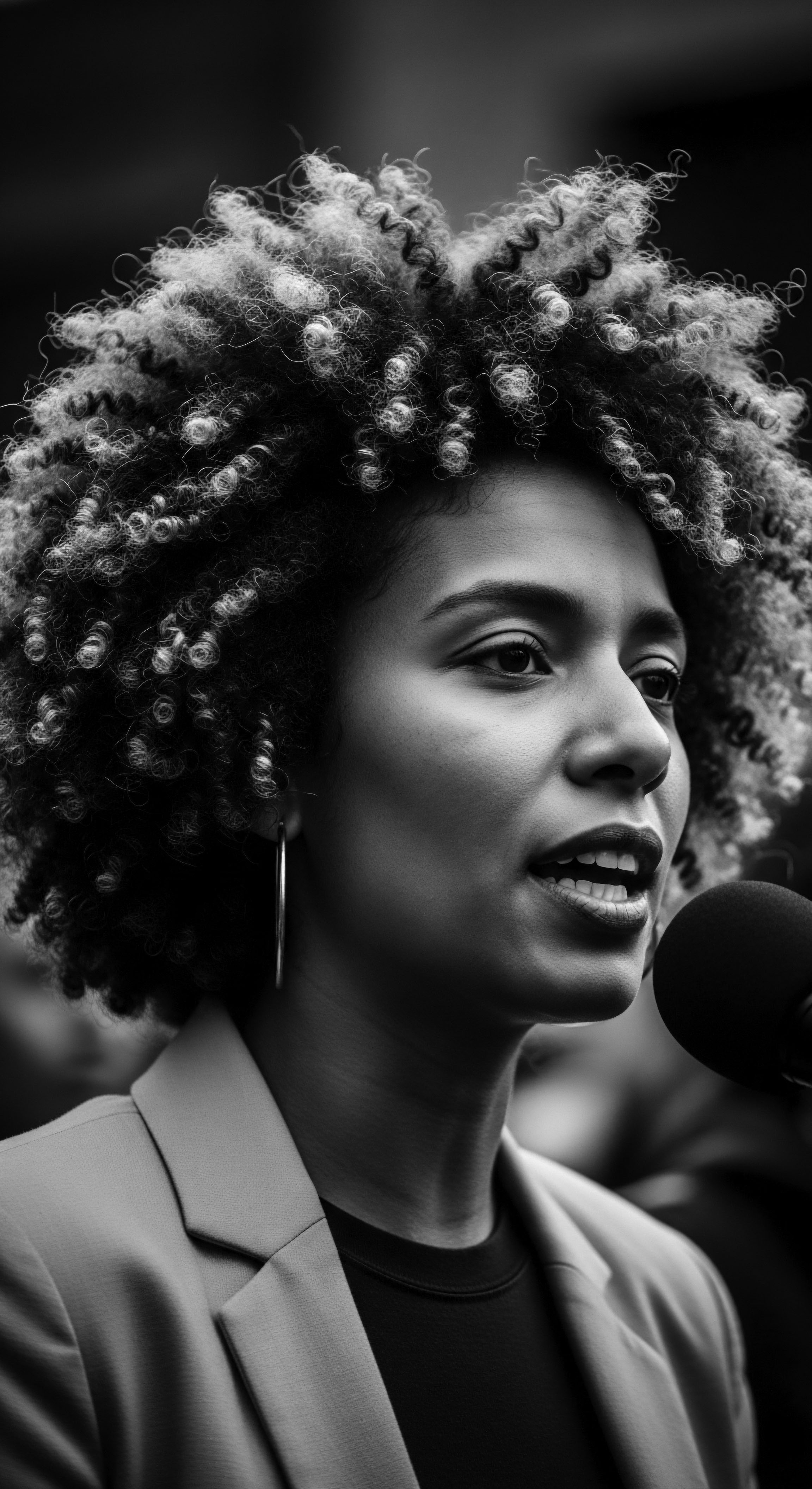
Fundamentals
Sebum production, at its core, represents a fundamental biological process within the human body, a continuous wellspring from specialized glands nestled beneath the skin’s surface. This oily, waxy substance, generated by the sebaceous glands, serves as a natural lubricant and protective agent for both the skin and hair. Its biological definition centers on its composition ❉ a complex blend of lipids, including triglycerides, wax esters, squalene, and cholesterol, each component contributing to its multifaceted role.
The sebaceous glands, microscopic organs residing within the dermal layer, are typically associated with hair follicles, forming what is known as the pilosebaceous unit. This intimate connection ensures that as hair emerges from the scalp, it is naturally coated by this vital secretion.
For those embarking on a journey of understanding hair wellness, particularly within the context of textured hair, grasping the basic meaning of sebum production is a foundational step. It is not merely an oily residue; rather, it is a living part of our protective system, shielding the scalp from environmental aggressors, maintaining its suppleness, and offering a layer of defense against microbial growth. The hair itself benefits from this natural coating, which aids in moisture retention and provides a gloss. Without this inherent lubrication, hair would quickly become parched, brittle, and susceptible to breakage.
Ancestral communities, long before the advent of microscopes or molecular analysis, held an intuitive, embodied understanding of this natural process. They observed the sheen on healthy hair, the suppleness of a well-nourished scalp, and the contrast with hair that appeared dry or lacked vitality. Their ancient practices, passed down through generations, were often a direct response to these observations, aiming to work in harmony with the body’s own rhythms. The application of plant-based oils and butters, for instance, was a deeply practical and reverent act, supplementing the body’s natural output, especially for hair types where this natural distribution faced inherent challenges.
Sebum production is the body’s inherent mechanism for lubricating and shielding skin and hair, a biological process long understood and honored in ancestral care practices.
This initial explanation of sebum production lays the groundwork for appreciating its profound cultural and historical significance within the heritage of textured hair. It highlights the elemental connection between our biology and the timeless rituals of care that have shaped communities across the globe.
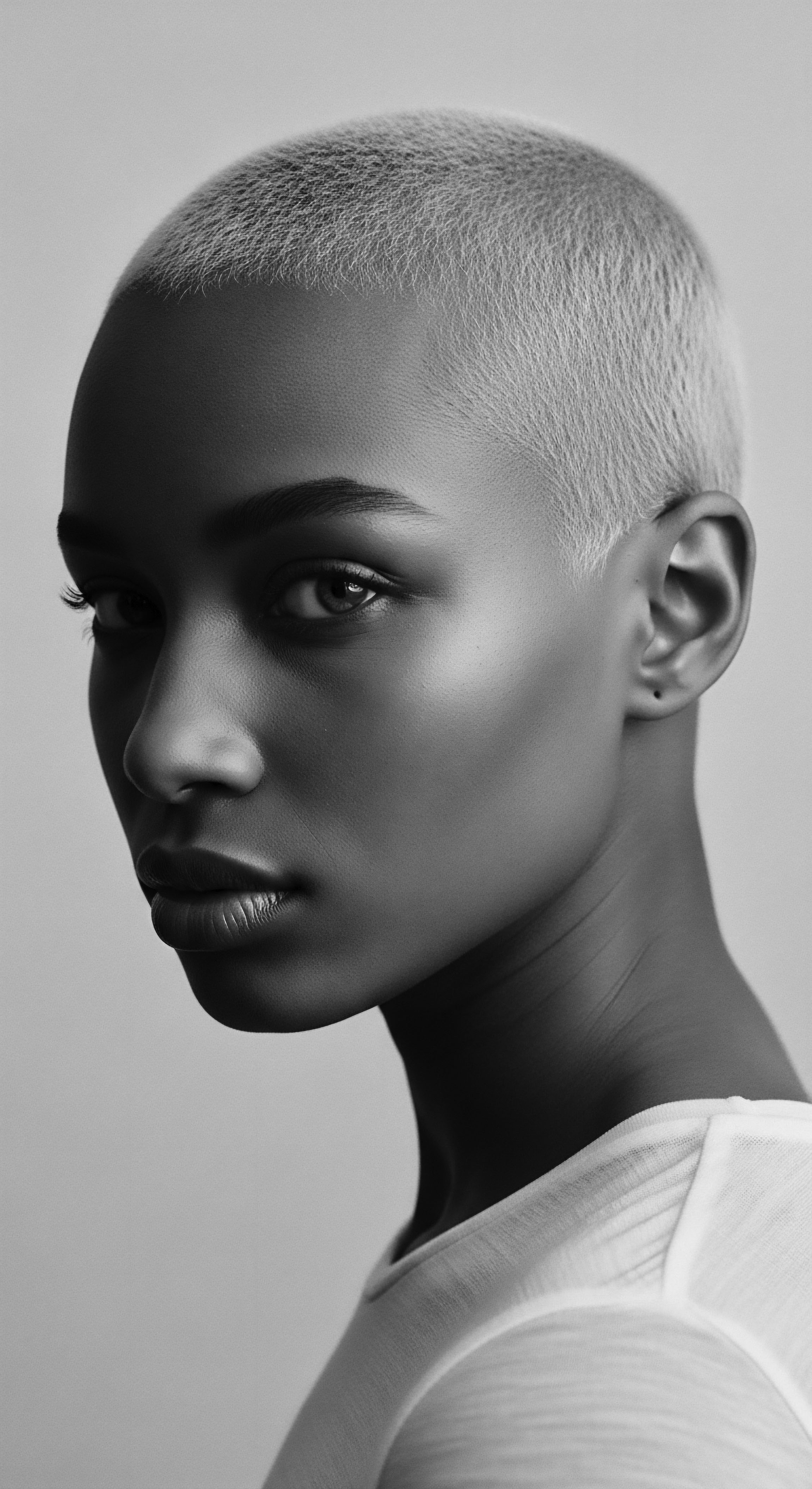
Intermediate
Moving beyond the elemental description, an intermediate exploration of sebum production reveals a more intricate biological symphony and its profound implications for textured hair. Sebum, this endogenous conditioning agent, is a dynamic mixture, its precise lipid profile varying based on genetics, hormonal rhythms, diet, and environmental factors. The sebaceous glands, while universally present, exhibit differing levels of activity among individuals and populations. This variance holds particular resonance when considering the unique needs of textured hair.
The helical, often tightly coiled architecture of many textured hair strands, a hallmark of Black and mixed-race lineages, creates a distinct physiological reality for sebum. On straighter hair types, sebum can readily descend the hair shaft, providing continuous lubrication from root to tip. However, for coily, kinky, or tightly curled hair, the path is far more circuitous. Each bend and twist acts as a barrier, impeding the natural downward migration of sebum.
This physical impediment often results in the scalp feeling adequately moisturized, while the ends of the hair, furthest from the sebaceous glands, remain prone to dryness. This inherent characteristic is not a deficiency; rather, it is a design that has historically shaped hair care traditions within communities of African descent.
Understanding this physiological interplay offers clarity on why external emollients and careful moisture retention practices became so central to ancestral textured hair care. These were not arbitrary rituals; they were sophisticated, intuitive responses to the hair’s natural disposition. From the nourishing butters of the African continent to the carefully concocted oil blends of the diaspora, these traditions aimed to bridge the gap between sebum production at the scalp and the moisture needs of the entire strand.
Consider the profound wisdom embedded in practices that prioritize sealing moisture into the hair shaft, or those that involve consistent oiling. These are direct acknowledgements of the hair’s structure and its interaction with natural sebum. The ancestral practices of applying rich, plant-derived substances directly to the hair and scalp were, in essence, an ancient form of bio-mimicry, providing the external lubrication that sebum, due to the hair’s unique morphology, could not fully deliver on its own. This understanding of sebum’s distribution, or its restricted flow, within textured hair forms a cornerstone of historical and contemporary hair care wisdom for these communities.
The journey of sebum along textured hair is often impeded by its coiled structure, a physiological reality that gave rise to generations of purposeful, external moisturizing practices.
This deeper grasp of sebum’s behavior on textured hair, coupled with the ancestral ingenuity in addressing its unique challenges, bridges biological understanding with cultural heritage, illuminating the wisdom behind time-honored hair care rituals.
The distinction between sebum’s presence at the scalp and its distribution along the hair shaft is a particularly compelling aspect for those with textured hair. It highlights a common experience ❉ a scalp that might feel oily, yet hair strands that feel dry and brittle. This apparent paradox is a direct consequence of the hair’s architecture.
The very twists and turns that grant textured hair its remarkable volume and character also create a labyrinth for the scalp’s natural oils. This physiological reality has profoundly influenced the historical development of hair care strategies in communities where textured hair is prevalent.
- Sebum’s Composition ❉ A complex lipid mixture, including triglycerides, wax esters, squalene, and cholesterol, offering lubrication and a protective barrier.
- Hair Shaft Morphology ❉ The unique, often elliptical and highly coiled cross-section of textured hair creates physical barriers for sebum distribution.
- Physiological Disparity ❉ Adequate sebum production at the scalp often contrasts with insufficient lubrication along the hair shaft, especially at the ends.
Traditional hair care methods, therefore, often focused on direct application of external lipids to the hair strands. These practices, honed over centuries, served as a compensatory mechanism, providing the necessary conditioning and protection that natural sebum struggled to deliver comprehensively. This ancestral wisdom, recognizing the inherent needs of textured hair, represents a profound connection to hair’s biological truths, long before scientific instruments could precisely measure lipid distribution.
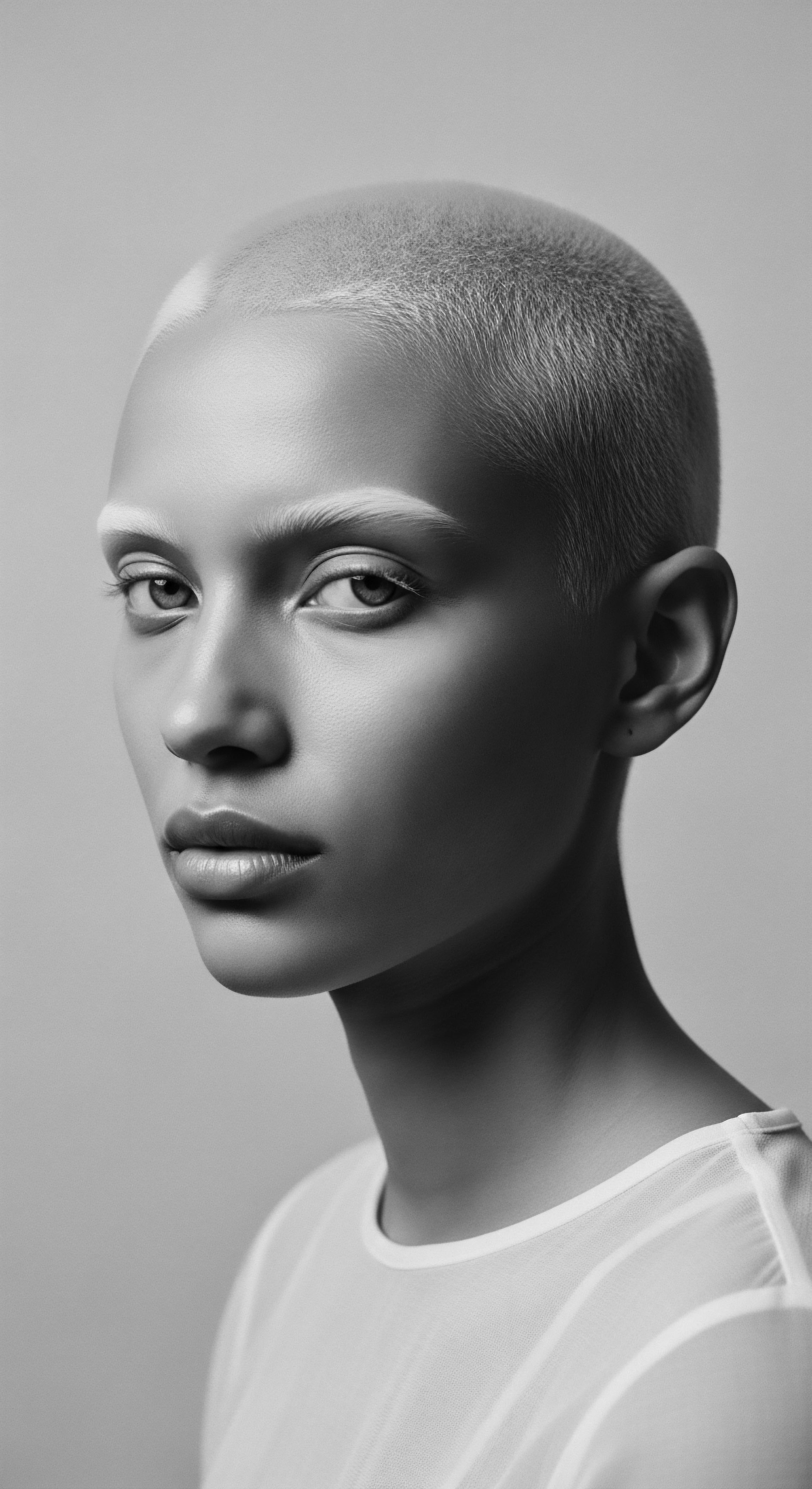
Academic
The academic delineation of sebum production extends beyond a mere biological description, delving into its intricate physiological controls, its diverse biochemical profile, and its profound, often historically undervalued, interplay with human hair diversity, particularly within the context of textured hair heritage. Sebum, the output of the holocrine sebaceous glands, represents a highly specialized lipid mixture, comprising glycerides (triglycerides, diglycerides, monoglycerides), wax esters, squalene, free fatty acids, and cholesterol esters. These components are synthesized within the sebocytes and extruded into the pilosebaceous canal, coating the hair shaft and spreading across the skin surface. The regulatory mechanisms governing sebum secretion are complex, involving hormonal influences (especially androgens), neural stimuli, and local factors within the skin, all contributing to individual variations in quantity and quality.
For individuals of African descent and those with mixed heritage, the meaning of sebum production is intrinsically linked to the unique biophysical characteristics of their hair. The morphology of Afro-textured hair, characterized by its elliptical cross-section and high degree of helical coiling, presents a distinct challenge to the uniform distribution of sebum along the hair shaft. This structural configuration, observed through advanced trichological imaging, physically impedes the natural downward flow of scalp-produced lipids. Consequently, despite studies indicating that individuals of African descent may exhibit comparable or even higher rates of sebum secretion at the scalp compared to other ethnic groups, the hair fibers themselves, particularly towards the ends, frequently experience a state of relative dryness.
For instance, a study published in Dermato-Endocrinology found that African American women secreted larger amounts of sebum, specifically higher levels of wax esters, than Caucasian women, yet the coiled nature of their hair often prevents this abundance from reaching the entire strand, contributing to perceived dryness. This physiological reality has profoundly shaped ancestral hair care practices, evolving not from a deficit in sebum production, but from a deeply intuitive understanding of its impeded travel along the unique architecture of textured hair.
This historical response to a biological reality provides a compelling case study in adaptive human ingenuity and embodied knowledge. Communities across the African continent and throughout the diaspora developed sophisticated, multi-generational hair care systems that systematically addressed this localized dryness. These practices, far from being simplistic, reflect an advanced, albeit non-Western, comprehension of hair biology and environmental adaptation.
The application of rich plant oils and butters—such as Shea Butter (Vitellaria paradoxa), Cocoa Butter (Theobroma cacao), or Palm Oil (Elaeis guineensis)—was not merely cosmetic; it was a strategic intervention, mimicking and augmenting the protective and conditioning role that sebum struggled to fulfill along the entire length of the coiled hair strand. These ancestral traditions served as a living pharmacopeia, drawing upon indigenous botanical resources to create formulations that lubricated, sealed, and shielded the hair from environmental stressors.
Ancestral hair care practices, particularly the use of rich plant emollients, represent a sophisticated, culturally informed response to the physiological challenge of sebum distribution on highly coiled hair.
The significance of this understanding extends beyond mere historical curiosity. It offers a counter-narrative to Eurocentric beauty standards that often pathologized textured hair as “dry” or “unmanageable,” failing to grasp the underlying physiological mechanisms and the ingenious cultural responses. Instead, it posits that the inherent nature of textured hair, combined with the body’s sebum production patterns, simply necessitated a different, culturally attuned approach to care. This perspective elevates traditional practices from folklore to empirically validated wisdom, predating modern trichology by centuries.
Furthermore, the meaning of sebum production within this heritage context extends to the spiritual and communal dimensions of hair care. The act of oiling, detangling, and styling hair was often a communal ritual, particularly among women, fostering intergenerational bonding and transmitting cultural knowledge. Hair, being the most outward expression of self, intimately connected to the head and spirit, became a canvas for identity, status, and community narratives. The condition of the hair, maintained through these sebum-supplementing rituals, reflected personal and collective well-being.
From an academic standpoint, the study of sebum production in textured hair opens avenues for interdisciplinary research, bridging dermatology, ethnobotany, anthropology, and cosmetic science. It invites a critical examination of how historical and cultural practices can inform contemporary hair care product development, moving beyond universalized formulations to embrace and optimize for the unique needs of diverse hair types. This approach honors the ancestral wisdom that recognized the intrinsic qualities of hair and adapted care accordingly, creating a legacy of resilience and beauty that continues to shape hair identities globally.

The Sebaceous Gland ❉ A Biological Architect of Heritage
The sebaceous gland, a microscopic marvel, operates as a specialized exocrine gland within the skin, producing sebum through a process known as holocrine secretion. In this mechanism, the entire sebocyte cell matures, accumulates lipids, and then ruptures, releasing its contents into the hair follicle. This continuous cellular turnover ensures a steady supply of sebum.
The density and size of these glands vary across different bodily regions, with the scalp and face hosting a particularly high concentration, underscoring their profound influence on hair and skin condition. The intrinsic biological rhythm of sebum production is not static; it responds to a multitude of internal and external cues.
Internal modulators include hormonal fluctuations, notably androgens, which stimulate sebaceous activity. This explains variations in sebum output during puberty, pregnancy, and aging. Genetic predispositions also play a substantial role, influencing both the quantity and specific lipid composition of sebum produced by an individual.
External factors, such as environmental humidity, temperature, and even dietary choices, can subtly influence sebum’s texture and flow. A deeper investigation into these influences reveals a complex interplay that defines the scalp’s microenvironment and, by extension, the initial condition of the emerging hair strand.
For textured hair, this biological foundation carries particular weight. The scalp of individuals with highly coiled hair, despite often being well-hydrated by its own sebum, faces the unique challenge of delivering that hydration along the entire length of the hair fiber. This inherent physiological reality, rather than any deficiency in sebum production itself, underscores the long-standing ancestral wisdom that championed external lubrication. This is a crucial distinction, moving the discussion away from a narrative of “dry hair” as an inherent flaw and towards an understanding of “hair with specific distribution needs.”
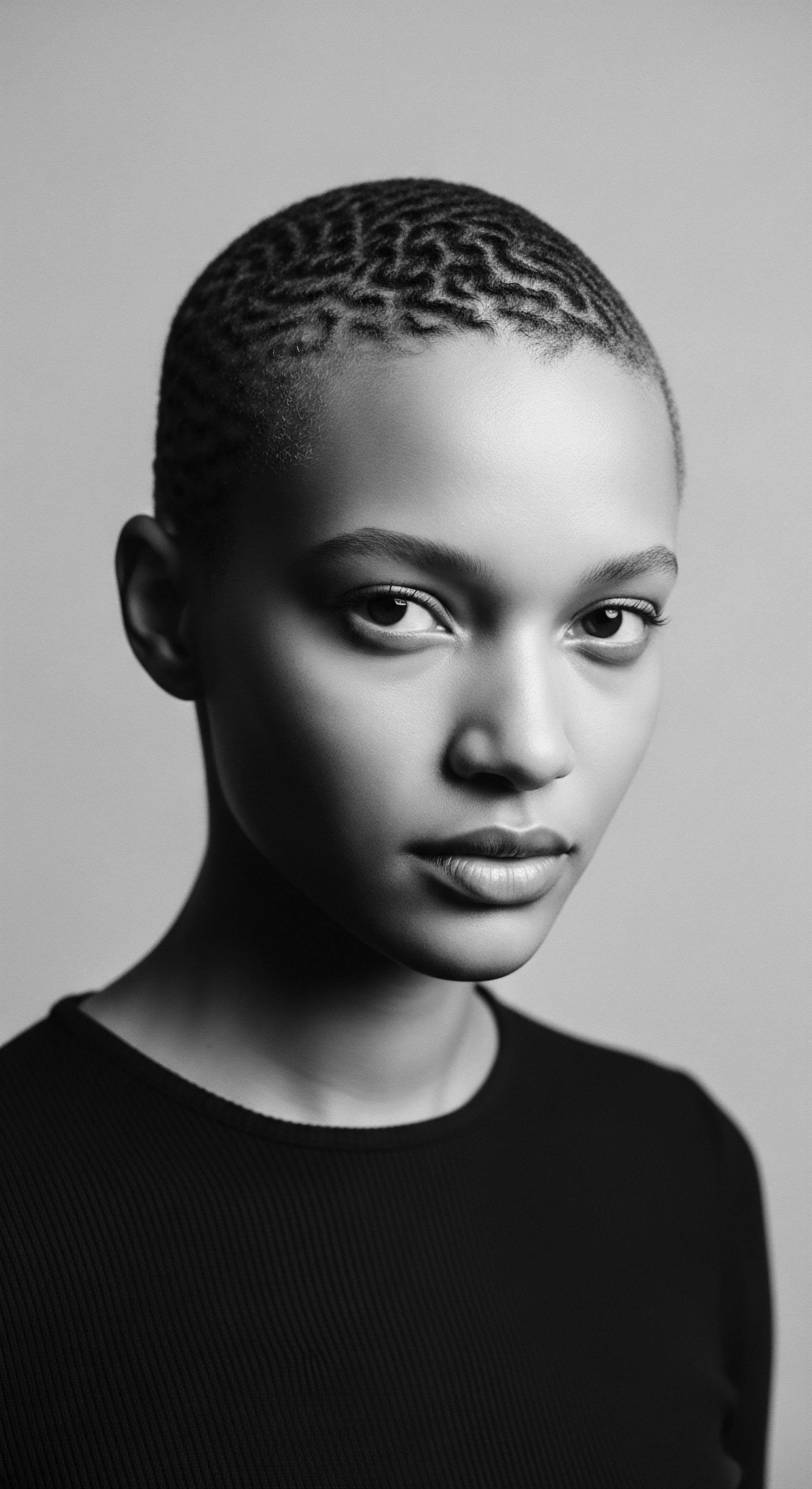
Historical Responses to Sebum Distribution on Textured Hair
Across diverse African societies and throughout the diasporic journey, communities developed sophisticated, localized responses to the challenge of sebum distribution on textured hair. These historical practices were not born from scientific laboratories but from generations of keen observation, experimentation, and a profound connection to natural resources. The very notion of “hair care” in these contexts was often intertwined with holistic well-being, community rituals, and expressions of identity.
- Shea Butter Application ❉ Originating from the shea tree (Vitellaria paradoxa) indigenous to West Africa, shea butter became a foundational element in hair care. Its rich emollient properties provided a dense, protective coating that compensated for the limited travel of natural sebum along coiled strands. This practice was not merely about lubrication; it was about creating a resilient barrier against environmental elements and maintaining hair’s suppleness.
- Coconut Oil and Palm Oil Use ❉ In coastal West African regions and other parts of the continent, coconut oil and palm oil were widely utilized. These oils, with their distinct fatty acid profiles, were applied to the scalp and hair to seal in moisture, add luster, and offer protection. The ritual of oiling often involved gentle massage, which not only distributed the applied oils but also stimulated blood flow to the scalp, promoting overall scalp health.
- Herbal Infusions and Clay Treatments ❉ Beyond pure oils, many ancestral traditions incorporated herbal infusions and natural clays. For instance, the use of certain herbs, often infused into oils or water, was believed to cleanse the scalp without stripping its natural oils, thereby preserving the beneficial aspects of sebum while addressing excess or buildup. Clays, like rhassoul clay from Morocco, offered a gentle cleansing action, drawing out impurities without disrupting the scalp’s delicate balance.
These practices reveal an intuitive understanding of lipid chemistry and hair physiology, long before these terms existed. The knowledge was embodied, passed down through the tender hands of mothers, grandmothers, and community elders, transforming hair care into a communal act of preservation and cultural continuity.
| Aspect of Care Moisture Retention |
| Ancestral Practices (Echoes from the Source) Regular application of plant butters (e.g. shea, cocoa) and natural oils to hair strands to seal in moisture. |
| Contemporary Insights (The Unbound Helix) Understanding of humectants and emollients; layered product application (LOC/LCO method) to optimize hydration and seal sebum's benefits. |
| Aspect of Care Scalp Cleansing |
| Ancestral Practices (Echoes from the Source) Use of natural clays (e.g. rhassoul), fermented rice water, or mild plant-based soaps for gentle cleansing. |
| Contemporary Insights (The Unbound Helix) Development of sulfate-free shampoos and co-washes that cleanse without stripping natural oils, preserving the scalp's lipid barrier. |
| Aspect of Care Distribution Aid |
| Ancestral Practices (Echoes from the Source) Manual manipulation, gentle finger-detangling, and specific braiding or twisting styles to aid oil travel. |
| Contemporary Insights (The Unbound Helix) Use of wide-tooth combs, brushes designed for detangling textured hair, and targeted scalp massages to encourage sebum spread. |
| Aspect of Care Protective Styling |
| Ancestral Practices (Echoes from the Source) Braids, twists, and wraps that shield hair ends from environmental exposure, preserving natural lubrication. |
| Contemporary Insights (The Unbound Helix) Continued advocacy for protective styles; recognition of their role in minimizing mechanical stress and retaining moisture, working with sebum's protective layer. |
| Aspect of Care The enduring wisdom of ancestral practices provides a foundational understanding for modern textured hair care, illustrating a continuous dialogue between tradition and scientific discovery. |
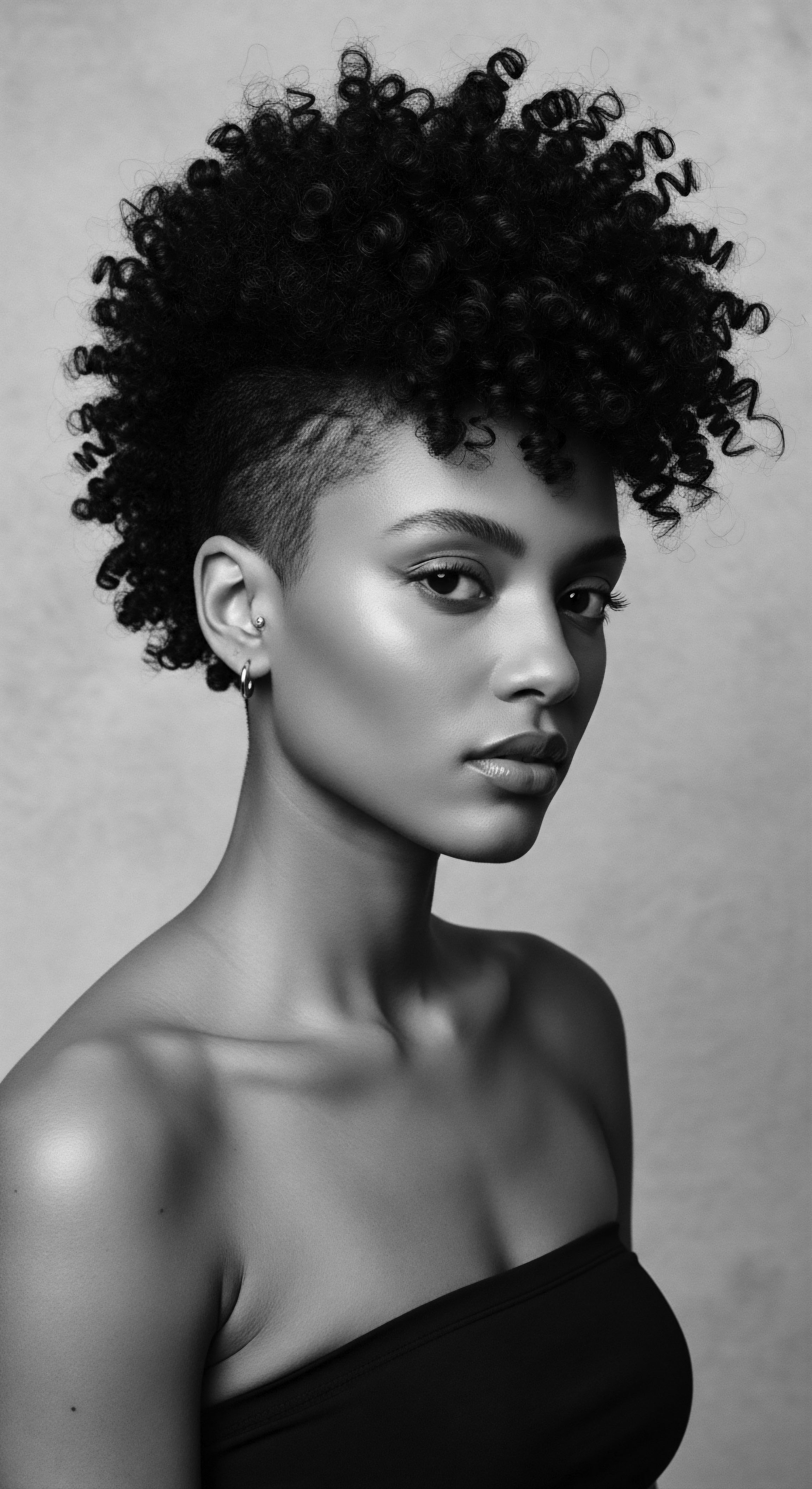
The Unbound Helix ❉ Sebum Production and Identity
The concept of sebum production, when viewed through the lens of textured hair heritage, transcends its purely biological definition to become a symbol of identity, resilience, and cultural reclamation. For generations, the natural state of Black and mixed-race hair, with its unique sebum distribution patterns, was often deemed “unruly” or “unprofessional” within dominant beauty paradigms. This historical pressure led to widespread practices of chemical straightening and heat styling, often to the detriment of hair health, as individuals sought to conform. These practices, ironically, often further disrupted the hair’s natural lipid balance and integrity.
The resurgence of the Natural Hair Movement, particularly since the early 21st century, represents a profound cultural shift. It is a collective turning towards the inherent beauty and strength of textured hair, embracing its natural patterns and, by extension, its physiological needs related to sebum. This movement is not simply about hairstyles; it is a declaration of self-acceptance, a celebration of ancestral legacies, and a rejection of oppressive beauty standards. It involves a re-education about how sebum interacts with coiled hair, recognizing that the perceived “dryness” is a structural characteristic, not a flaw, and that ancestral moisturizing practices were indeed the intuitive solution.
The understanding of sebum production’s role in textured hair now informs product development, advocacy, and personal care routines. Brands and individuals are increasingly seeking formulations that work in harmony with the hair’s natural lipid layer, supplementing where necessary without stripping. This represents a continuum of care that bridges ancient wisdom with contemporary scientific understanding, creating a future where textured hair is universally honored for its natural beauty and unique requirements. The meaning of sebum production in this context becomes a testament to adaptability, wisdom, and the enduring spirit of heritage.

Reflection on the Heritage of Sebum Production
As we conclude this exploration of sebum production, our gaze settles upon its enduring legacy, a silent yet potent force woven into the very fabric of textured hair heritage. This natural emollient, flowing from the scalp, carries with it an ancestral memory of care, adaptation, and resilience. It is a profound meditation on how biology has always shaped human culture, how the very structure of a strand influenced the rituals of community, and how these rituals, in turn, reinforced identity across generations. The journey of sebum, from its elemental biological source to its cultural significance, mirrors the journey of the textured hair strand itself ❉ a narrative of enduring beauty, inherent strength, and unwavering spirit.
The ‘Soul of a Strand’ ethos finds deep resonance in this understanding. Each coil, each twist, carries not only its unique genetic blueprint but also the echoes of hands that oiled, braided, and adorned it through time. Sebum, often dismissed as mere oiliness, is revealed as a living part of this heritage, a physiological truth that guided the ingenious practices of our forebears.
Their wisdom, passed down through whispered remedies and communal gatherings, taught us to listen to the hair’s needs, to supplement its natural workings with botanicals from the earth, and to celebrate its unique disposition. This ancestral knowledge, far from being outdated, stands as a beacon, illuminating the path for contemporary care, inviting us to rediscover the harmonious balance between nature’s gifts and human ingenuity.
The ongoing dialogue between scientific inquiry and traditional wisdom regarding sebum production in textured hair continues to unfold. It reminds us that true understanding is not confined to laboratories but thrives in the lived experiences, historical narratives, and cultural expressions of communities. The beauty of textured hair, nurtured by its inherent sebum and the tender care passed down through lineages, remains an unbound helix—a symbol of identity that resists simplification, celebrates complexity, and carries the spirit of generations into the future.
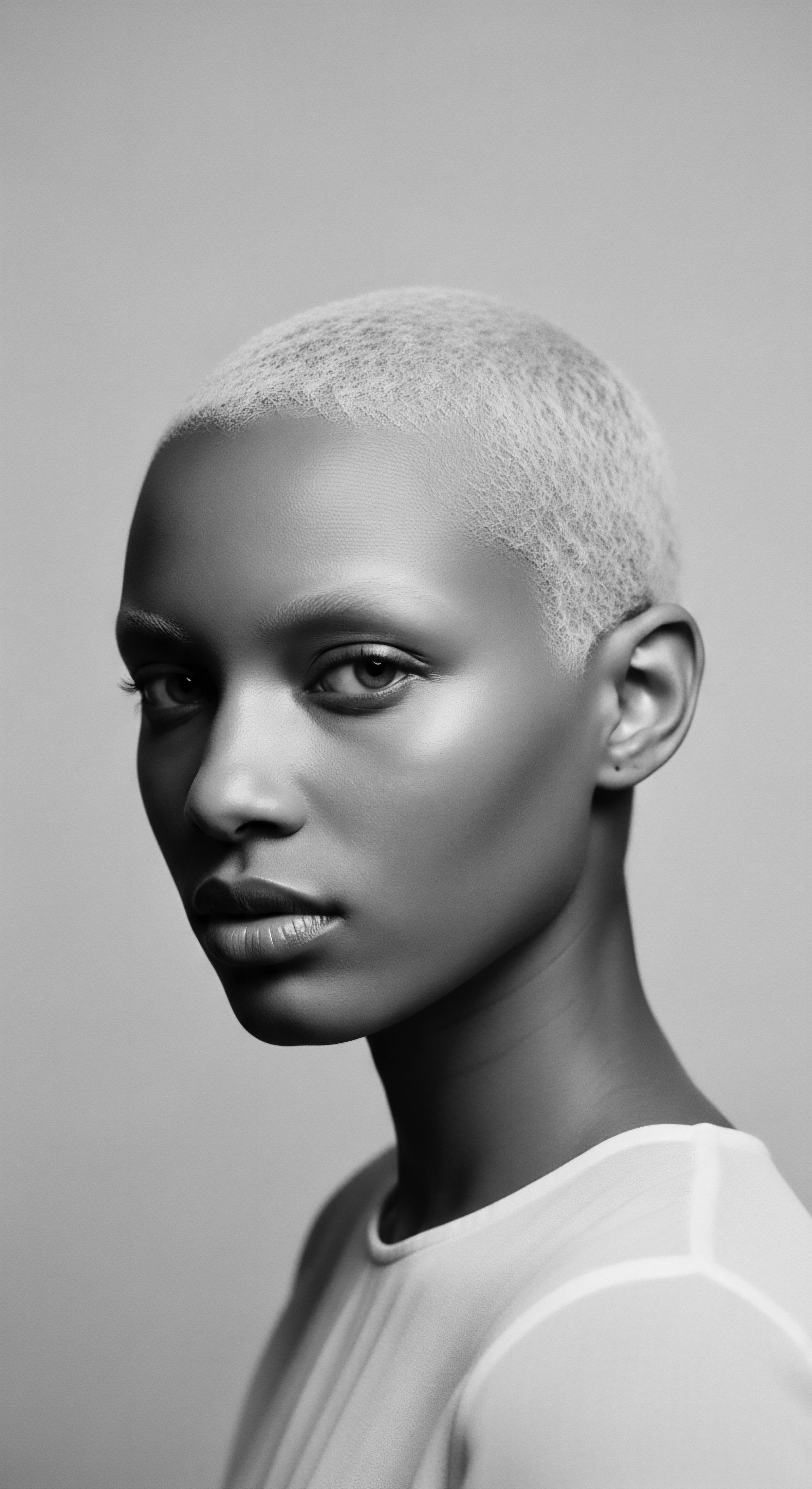
References
- Byrd, A. D. & Tharps, L. L. (2014). Hair Story ❉ Untangling the Roots of Black Hair in America. St. Martin’s Press.
- Davis-Sivasothy, A. (2011). The Science of Black Hair ❉ A Comprehensive Guide to Textured Hair Care. Sivasothy Publishing.
- Muizzuddin, N. Hillebrand, G. G. & Maes, D. H. (2006). Age and ethnic variations in sebaceous lipids. Dermato-Endocrinology, 1(1), 2-6.
- Mouchane, M. Taybi, H. Gouitaa, N. & Assem, N. (2021). Ethnobotanical Survey of Medicinal Plants used in the Treatment and Care of Hair in Karia ba Mohamed (Northern Morocco). Journal of Pharmaceutical Research International, 33(38), 1-10.
- Satyajit, S. et al. (2014). Skin Residual Components ❉ Profiles Across Ethnicity and Age, A Review. Cosmetics & Toiletries Magazine .
- Shafei, M. A. & Youssef, H. M. (2020). Black women’s hair ❉ the main scalp dermatoses and aesthetic practices in women of African ethnicity. Dermatology Practical & Conceptual, 10(4), e2020084.
- Verma, N. & Singh, N. (2023). Hair Oiling Is More Than A Trend—It Connects Me To My South Asian Roots. Chatelaine .
- Wang, S. et al. (2021). The Genomic Variation in Textured Hair ❉ Implications in Developing a Holistic Hair Care Routine. Cosmetics, 8(3), 67.
- Youn, S. W. et al. (2006). Age-related changes in sebaceous gland activity and sebum composition in Asian and Caucasian populations. Archives of Dermatological Research, 298(2), 65-72.
